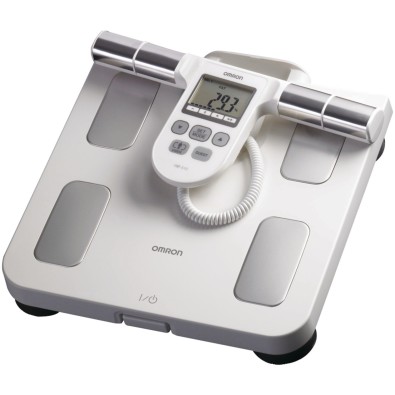Estimating body-fat percentage is far from precise.
Most methods available to us range from “acceptably accurate” to flat-out useless, especially when it comes to tracking changes over time. Of course, they’re all marketed as highly accurate… but that’s just because companies want your money.
The lack of a solid guide on this site has bugged me for a while.
On one hand, I don’t recommend tracking body fat percentage due to the margin of error in most tools.
On the other hand, I do use body-fat percentage ranges to guide decisions around when to cut or bulk. That’s a contradiction — and this fills the gap.
🧭 Use the US Navy Body Fat Calculator alongside my new Visual Guide to Body Fat Percentage, built using real coaching client photos, to get the most reliable estimate possible.
🇺🇸 US Navy Body Fat Calculator
MEASUREMENT GUIDELINES For The Calculator
- Neck – Keep your head straight, look forward. Keep your shoulders down and relaxed.
- Abdomen: For men, measure at the navel. For women, measure at the narrowest point.
- Waist (for women only): Measure at the widest point.
- Measure three times for each and average the three.
Simple as that.
Navy Body Fat Calculator Accuracy
The accuracy of this Navy body fat calculator is ~3–4%, so while it’s a good way of gauging roughly where you’re at, I don’t recommend you try to track body fat loss progress in this way. It would be much better to track body measurements and scale weight.
Navy Body Fat Calculator Equations
Men: 86.010 x log10 (abdomen - neck) - 70.041 x log10 (height) + 36.76Women: 163.205 x log10 (waist + hip - neck) - 97.684 x log10 (height) - 78.387.The Issues Of ESTIMATING BODY-FAT PERCENTAGE
Here’s a rundown of the methods we typically have available to us for measuring body fat, from most to least accurate. The numbers given are the individual error rates that have been observed:
- Autopsy
- DEXA scan accuracy — ~5%
- The US Navy Body Fat Calculator accuracy — ~3–4% (Convenient, free.)
- BodPod / Underwater weighing — Up to 6% (Expensive, inconvenient.)
- Body-fat caliper measurement accuracy. — Skilled practitioner, ~3%.
- Bioelectrical Impedance Analysis (BIA) machine accuracy. — Up to 8%.

So, if you use a BIA machine and get a reading of 20%, your actual body fat could be anywhere from 12–28%. If you use the US Navy body fat calculator and get a reading of 20%, your actual body fat could be anywhere from 17-23%. This is the difference between being useless and helpful.
Things To Watch Out For When Measuring Body Fat
The US Navy body fat calculator wins out on convenience and cost, this is what I’d recommend for most people. Notice that the reading is heavily determined by the measurement at the navel. Two important things to point out in regards to this:
- Excess fat comes off of the stomach/torso generally from the top down. Past the point of 10% body fat, the mid-stomach measurement (that at the navel, which the equation uses) will change very little as the person gets leaner because most of the fat is coming off from the lower abs and back at this point. Therefore, if you’re already very lean, this won’t work well for you. It will be best to estimate from pictures or use calipers.
- It will give those with particularly thick (well-developed) abs, or a bloated abdomen higher readings than reality.
Navy Body Fat Calculator FAQ
The US Navy body fat calculator is accurate to approximately 3–4%.
You can estimate your body fat percentage visually, using the US Navy body fat calculator, a BIA machine, BodPod, underwater weighing, body-fat caliper measurements, or DEXA scan. All have their flaws. I don’t recommend you try to rely on these to track your physique progress. I recommend people use scale weight and a tape measure to track progress instead.
Abs will start to show between 8% and 16% body fat, with most trainees somewhere in the middle of that range. In general, the more muscle mass you carry, the higher the body fat percentage your abs will show because you have more muscle pushing on the skin.
Yes, you may be right. If you believe that you have a better measurement from elsewhere, then by all means, please use that. Remember, this is not being suggested as a method of tracking your progress (here is my recommendation on how to track your physique progress), but just a way to gauge where you might currently be at.
Here is the full US MoD paper covering how the formulas for the US Navy body fat calculator were developed so you can make your own decision.
Visually. Check out my visual guide to body-fat percentage.

Privacy policy.